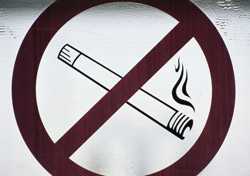Dangers of Hookah Smoking
 Similar to cigarettes, hookah smoking delivers the addictive drug nicotine and it is at least as toxic as cigarette smoking. While many hookah smokers may consider this practice less harmful than smoking cigarettes, hookah smoking carries many of the same health risks as cigarettes.
Similar to cigarettes, hookah smoking delivers the addictive drug nicotine and it is at least as toxic as cigarette smoking. While many hookah smokers may consider this practice less harmful than smoking cigarettes, hookah smoking carries many of the same health risks as cigarettes.
Hookahs are water pipes that are used to smoke specially made tobacco that is usually flavored. They are also called a number of different names, including waterpipe, narghile, argileh, shisha, hubble-bubble, and goza. Hookah smoking is typically practiced in groups, with the same mouthpiece passed from person to person.
In recent years, there has been an increase in hookah use around the world, most notably among youth and college students. The Monitoring the Future survey found that in 2014, about 23% of 12th grade students in the United States had used hookahs in the past year, up from 17% in 2010. In 2014, this rate was slightly higher among boys (25%) than girls (21%). CDC’s National Youth Tobacco Survey found that from 2013 to 2014, hookah smoking roughly doubled for middle and high school students in the United States. Current hookah use among high school students rose from 5.2% (770,000) to 9.4% (1.3 million) and for middle school students from 1.1% (120,000) to 2.5% (280,000) over this period.

Hookah smoke contains many of the same harmful toxins as cigarette smoke.
The Risk
According to a study published in the 2012 issue of CDC’s Preventing Chronic Disease (PCD ), many hookah smokers believe that smoking a hookah carries less risk of tobacco-related disease than cigarette smoking. However, hookah smoke contains many of the same harmful toxins as cigarette smoke and has been associated with lung cancer, respiratory illness, low birth weight, and periodontal disease. According to a report from the World Health Organization (WHO) [550 KB], a hookah smoking session may expose the smoker to more smoke over a longer period of time than occurs when smoking a cigarette. Also, due to the method of smoking—including frequency of puffing, depth of inhalation, and length of the smoking session—hookah smokers may absorb higher concentrations of the same toxins found in cigarette smoke.
Hookah Smoke and Cancer
- The charcoal used to heat tobacco in the hookah increases the health risks by producing smoke that contains high levels of carbon monoxide, metals, and cancer-causing chemicals.
- A typical 1-hour-long hookah smoking session involves 200 puffs, while an average cigarette is 20 puffs. The volume of smoke inhaled during a typical hookah session is about 90,000 milliliters, compared with 500 to 600 milliliters inhaled when smoking a cigarette.
- Using a hookah to smoke tobacco poses a serious potential health hazard to smokers and others exposed to the emitted smoke.

There has most notably been an increase in hookah use among youth and college students.
Educating Youth About the Dangers
According to a study published in PCD entitled Opportunities for Policy Interventions to Reduce Youth Hookah Smoking in the United States, one way to reduce youth hookah use is by educating young people about the harmful health effects associated with hookah smoking. The study suggests requiring warning labels on tobacco products and advertisements. Health organizations echo these suggestions. The WHO’s Study Group on Tobacco Product Regulation (TobReg) urges consideration of the following public health initiatives to reduce hookah smoking and associated disease:
- Education of health professionals, regulators, and the public at large is urgently needed about the risks of hookah smoking, including high potential levels of second-hand exposure among children, pregnant women, and others.
- Hookahs and hookah tobacco should be subjected to the same regulations as cigarettes and other tobacco products.
- Hookahs and hookah tobacco should include strong health warnings.
- Claims of harm reduction and safety should be prohibited.
- Misleading labeling, such as “contains 0 MG tar,” which may imply safety, should be prohibited.
- Waterpipes should be included in comprehensive tobacco control efforts, including prevention strategies and cessation interventions.
- Hookahs should be prohibited in places consistent with bans on cigarette and other forms of tobacco smoking.
More Information
More Information
- CDC Hookah Fact Sheet
- Bidi and Hookah Use Among Canadian Youth: Findings From the 2010 Canadian Youth Smoking Survey
- Opportunities for Policy Interventions to Reduce Youth Hookah Smoking in the United States
- Prevalence of Waterpipe Tobacco Smoking Among Population Aged 15 Years or Older, Vietnam, 2010
- Hookah Smoking: A Growing Threat to Public Health [429 KB]
- Monitoring the Future [3.27 MB]
- Findings from the 2014 National Youth Tobacco Survey
- Page last reviewed: November 9, 2015
- Page last updated: November 9, 2015
- Content source:
- National Center for Chronic Disease and Prevention and Health Promotion, Division of Adult and Community Health
- Page maintained by: Office of the Associate Director for Communication, Digital Media Branch, Division of Public Affairs




 ShareCompartir
ShareCompartir